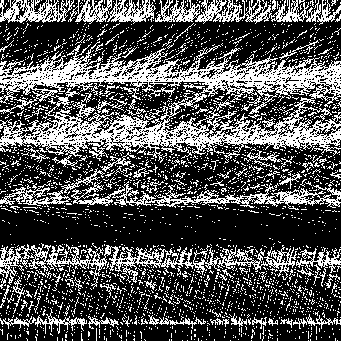Prof. Adrian Mancuso

ZOOM Meeting
April 13th, 2022
4 pm
Chair: Dr. Sebastian Günther
The second topic of our DS4S networking series will be presented by Prof. Adrian Mancuso (leading scientist, Scientific Instrument SPB/SFX, European XFEL). He will talk about the data science challenges at the European XFEL. His talk is entitled "Exploiting voluminous data from a high repetition rate X-ray Free Electron Laser for Science: How more can really mean more when it comes to XFEL data".
Abstract
The European X-ray Free Electron Laser (EuXFEL) [1] is a source of ultra bright, ultrashort X-ray pulses that allow one to probe the structure of matter in unprecedented ways [2]. It is also presently the highest repetition rate XFEL in operation, producing more than an order of magnitude more pulses per unit time than other operating XFELs around the world. But what does this really mean for science?
In this seminar, I will present examples of experiments that collect voluminous data at the SPB/SFX instrument [3] of the European XFEL—typically thousands to millions of two-dimensional image frames. I’ll show the basic outline of these experiments in serial femtosecond crystallography [4—8], single particle imaging [9, 10] and more to demonstrate that in each of these cases more data really does mean more science—either as a better quality outcome or more information. Finally, I’ll identify publicly available data set(s) of a similar nature for data researchers to explore and enjoy at their leisure.
----------------
[1] Tschentscher, et al, Applied Sciences, 7 (6), 592 (2017)
[2] See, for example, https://www.mdpi.com/journal/applsci/special_issues/science_xfel and much more.
[3] Mancuso, et al, Journal of Synchrotron Radiation, 26 (3), 1-17 (2019)
[4] Wiedorn, et al, Nature Communications, 9 (1), 4025 (2018)
[5] Grünbein et al, Nature Communications, 9 (1), 3487 (2018)
[6] Yefanov, et al, Structural Dynamics, 6, 064702 (2019)
[7] Pandey, et al, Nature Methods, 17 (1), 73-78 (2020)
[8] Pandey et al, IUCrJ, 8 (6), 878-895 (2021)
[9] Ayyer, et al, Optica, 8 (1), 15 (2021)
[10] Zhuang, et al, IUCrJ, 9 (2), it5025 (2022)
See below for further information and contact or subscribe to our mailing list using the link https://bit.ly/3hTStBa